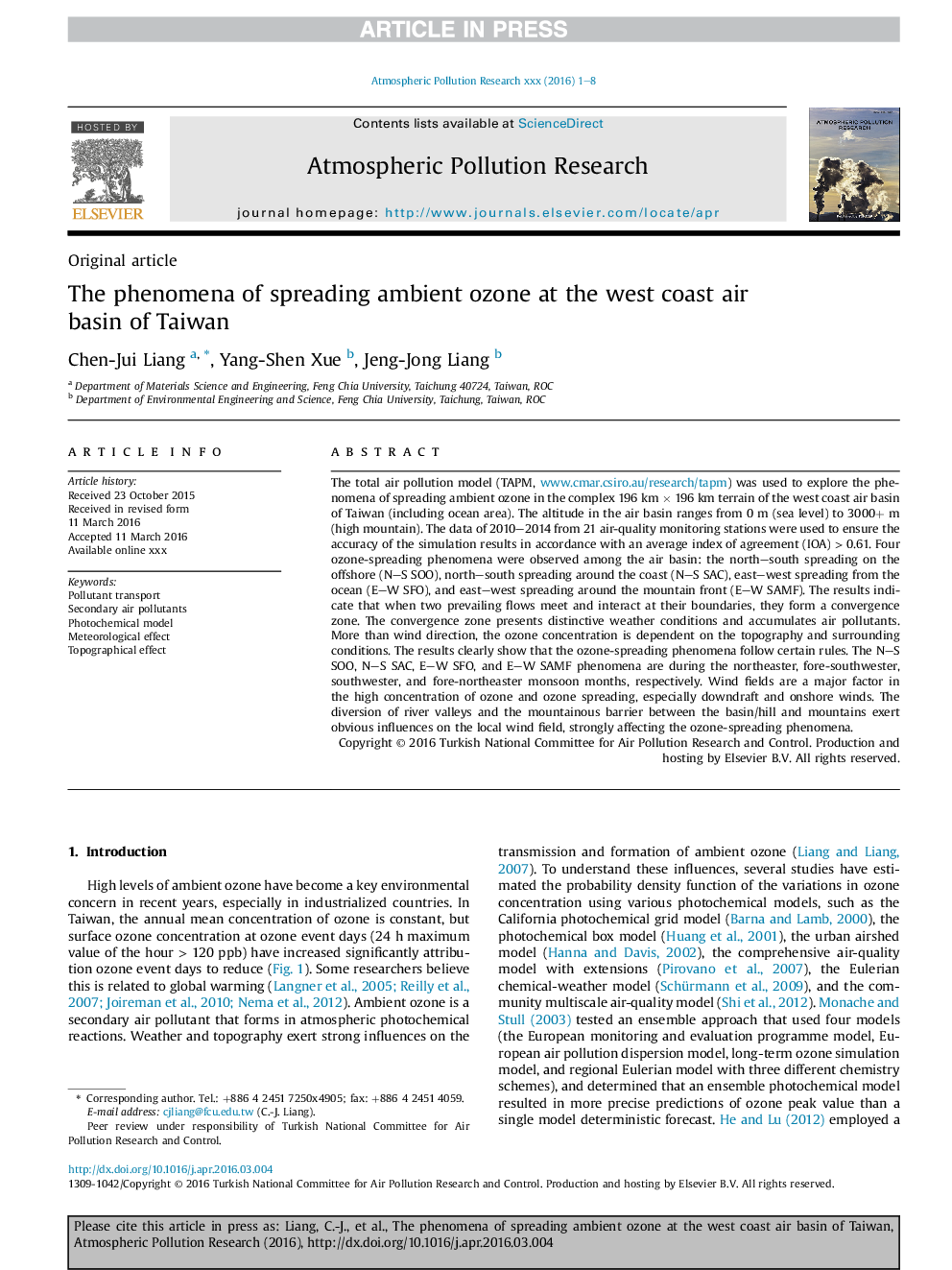| Article ID | Journal | Published Year | Pages | File Type |
|---|---|---|---|---|
| 10179860 | Atmospheric Pollution Research | 2016 | 8 Pages |
Abstract
The total air pollution model (TAPM, www.cmar.csiro.au/research/tapm) was used to explore the phenomena of spreading ambient ozone in the complex 196 km Ã 196 km terrain of the west coast air basin of Taiwan (including ocean area). The altitude in the air basin ranges from 0 m (sea level) to 3000+ m (high mountain). The data of 2010-2014 from 21 air-quality monitoring stations were used to ensure the accuracy of the simulation results in accordance with an average index of agreement (IOA) > 0.61. Four ozone-spreading phenomena were observed among the air basin: the north-south spreading on the offshore (N-S SOO), north-south spreading around the coast (N-S SAC), east-west spreading from the ocean (E-W SFO), and east-west spreading around the mountain front (E-W SAMF). The results indicate that when two prevailing flows meet and interact at their boundaries, they form a convergence zone. The convergence zone presents distinctive weather conditions and accumulates air pollutants. More than wind direction, the ozone concentration is dependent on the topography and surrounding conditions. The results clearly show that the ozone-spreading phenomena follow certain rules. The N-S SOO, N-S SAC, E-W SFO, and E-W SAMF phenomena are during the northeaster, fore-southwester, southwester, and fore-northeaster monsoon months, respectively. Wind fields are a major factor in the high concentration of ozone and ozone spreading, especially downdraft and onshore winds. The diversion of river valleys and the mountainous barrier between the basin/hill and mountains exert obvious influences on the local wind field, strongly affecting the ozone-spreading phenomena.
Related Topics
Physical Sciences and Engineering
Earth and Planetary Sciences
Atmospheric Science
Authors
Chen-Jui Liang, Yang-Shen Xue, Jeng-Jong Liang,
